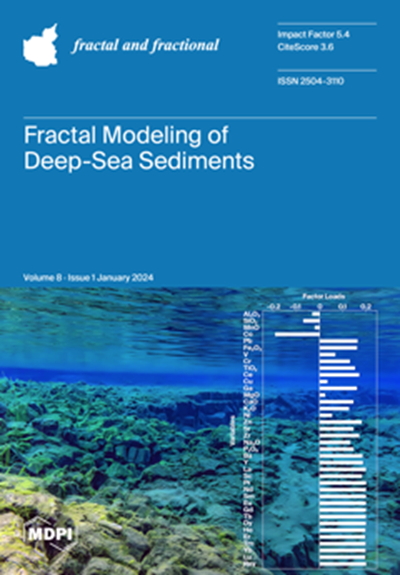Fractal Characterization of Multiscale Fracture Network Distribution in Dolomites: Outcrop Analogue of Subsurface Reservoirs
IF 3.6
2区 数学
Q1 MATHEMATICS, INTERDISCIPLINARY APPLICATIONS
引用次数: 0
Abstract
Fractured aquifers, especially dolomites, are important hydrocarbon reservoirs and sources of thermal and groundwater in many parts of the world, especially in the Alpine-Dinaric-Carpathian region. The most dominant porosity type is fracture porosity, which acts as the preferential fluid pathway in the subsurface, thus strongly controlling fluid flow. Outcrops provide valuable information for the characterization of fracture networks. Dolomite rock properties and structural and diagenetic processes result in fractured systems that can be considered fractals. The fracture network was analyzed on 14 vertical outcrops in 35 digitized photographs. The values of the fractal dimensions varied slightly by the software and method used, but the trends were consistent, which confirms that all methods are valid. Small values of fractal dimension indicate the dominance of a few small or large fractures, and high values of fractal dimension result from a combination of large numbers of small fractures accompanied by a few large fractures. The mean value of the fractal dimension for analyzed fracture networks was 1.648. The results indicate that the fracture network of the Upper Triassic dolomites can be approximated by fractal distribution and can be considered a natural fractal, and values can be extrapolated to higher and lower scales (1D and 3D).白云岩多尺度裂缝网络分布的分形表征:地下储层露头模拟
断裂含水层,特别是白云石,是世界许多地区,特别是阿尔卑斯-迪纳里-喀尔巴阡山脉地区的重要碳氢化合物储层和热能和地下水来源。最主要的孔隙类型是裂缝孔隙,它是地下的优先流体通道,从而有力地控制流体流动。露头为裂缝网络的表征提供了有价值的信息。白云石的岩石性质、结构和成岩过程导致了可被视为分形的破碎系统。在35张数字化照片中对14个垂直露头的裂缝网络进行了分析。分形维数的值因所使用的软件和方法而略有变化,但趋势是一致的,这证实了所有方法都是有效的。分形维数的小值表明少数小裂缝或大裂缝占主导地位,而分形维数的高值是由大量小裂缝伴随少数大裂缝的组合造成的。所分析的裂缝网络的分形维数的平均值为1.648。结果表明,上三叠统白云岩的断裂网络可以用分形分布来近似,可以认为是一种自然分形,其数值可以外推到较高和较低的尺度(1D和3D)。
本文章由计算机程序翻译,如有差异,请以英文原文为准。
求助全文
约1分钟内获得全文
求助全文
来源期刊

Fractal and Fractional
MATHEMATICS, INTERDISCIPLINARY APPLICATIONS-
CiteScore
4.60
自引率
18.50%
发文量
632
审稿时长
11 weeks
期刊介绍:
Fractal and Fractional is an international, scientific, peer-reviewed, open access journal that focuses on the study of fractals and fractional calculus, as well as their applications across various fields of science and engineering. It is published monthly online by MDPI and offers a cutting-edge platform for research papers, reviews, and short notes in this specialized area. The journal, identified by ISSN 2504-3110, encourages scientists to submit their experimental and theoretical findings in great detail, with no limits on the length of manuscripts to ensure reproducibility. A key objective is to facilitate the publication of detailed research, including experimental procedures and calculations. "Fractal and Fractional" also stands out for its unique offerings: it warmly welcomes manuscripts related to research proposals and innovative ideas, and allows for the deposition of electronic files containing detailed calculations and experimental protocols as supplementary material.
 求助内容:
求助内容: 应助结果提醒方式:
应助结果提醒方式:


